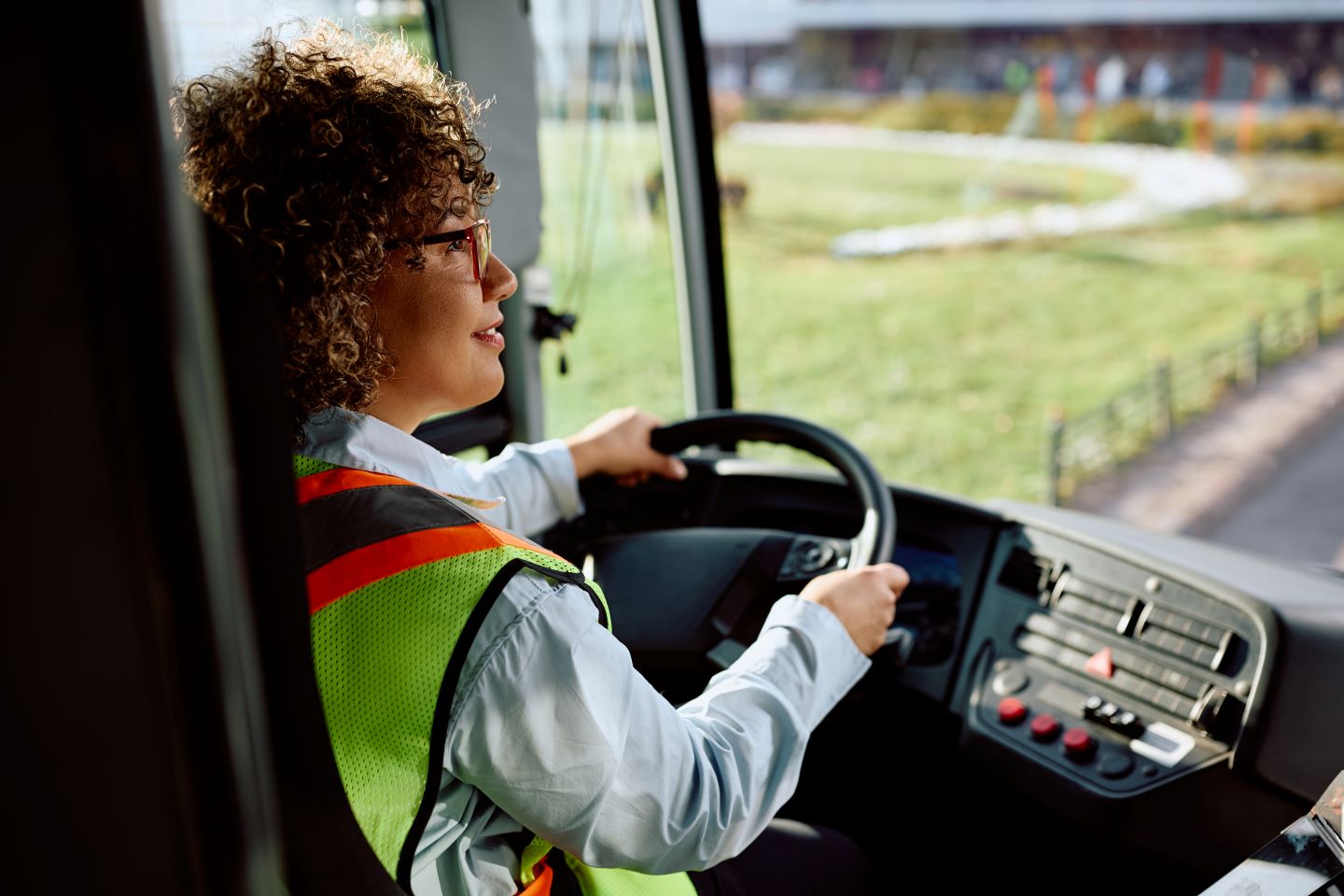Bus and Commercial Vehicle Safety
Last week, we discussed the importance of backing and spotting safety, and this week we want to offer some safety tips related to commercial vehicles and buses to ensure everyone on the road stays safe and sound.
Large trucks and buses have significant blind spots, longer stopping distances, and make wide turns. Therefore, it is vital for everyone on the road to plan for road safety and ensure drivers are following proper rules and procedures.
“In heavy truck crashes in 2001, only 13% of the deaths and 26% of the injuries were truck occupants, 74% and 69% were people in other passenger vehicles.”
To help avoid accidents or injury, follow the traffic rules below to learn about actions passenger vehicle drivers can take to help avoid incidents.
- Avoid Blind Spots - Avoid lingering in other vehicles’ blind spots. If you can’t see a truck or bus driver’s face in their mirror, they can’t see you.
- Be Aware of Long Stopping Distances - Large trucks and buses need the length of up to two football fields to stop safely. When merging in front of these large vehicles, leave extra space to give them the necessary stopping space.
- Anticipate Wide Turns - Trucks and buses need extra space and time to make wide turns carefully. Wait for large vehicles to finish turning before continuing your journey. Pay close attention when trucks and buses are turning right, as they might be unable to turn from the right lane quickly and may initially move left to create enough turning space.
- Stay Back - Trucks are much higher off the ground than passenger vehicles. In the event of a crash behind a truck, passenger vehicles could slide (or be pushed) under a car. Stay a safe distance when stopped behind a truck or bus, particularly going up an incline, where large vehicles might roll backward.
- Merge and Pass Safely - Use these tips and signals when merging in front of or passing large trucks and buses. Make sure the truck or bus is visible in your rear-view mirror before merging in front and leaving extra space.
- Avoid passing trucks and buses going down hills, mountains, etc., where they tend to pick up speed due to their heavy weight.
- Avoid passing from the right lane.
- When a truck or bus is passing you or merging into traffic from an on-ramp, give them extra space to change lanes safely.
- Be Patient - Trucks and buses need time to accelerate. Be patient and understand that they are driving at a safe speed for their cargo and weight.
- Buckle Up - Using a safety belt is one of the easiest and most important things drivers can do to save lives. Ensure all passengers are buckled up, and kids are in the safest seat based on age.
- Stay Focused - If you need to do anything in your car besides driving, get off the road and stop. Driving distracted is as dangerous as driving impaired.
- Avoid Driving Under the Influence or Fatigued - Alcohol and other drugs impair judgment and reaction time. There is no safe limit for drinking before driving. Prescription and over-the-counter medicines may cause dizziness, drowsiness, and slow reaction time. If you use medication that carries a warning, arrange an alternate driver, or use other forms of transportation. Take regular breaks, switch off driving with a partner, or get off the road and find a safe place to rest if you are tired.
- Understand the Differences - Large trucks and buses have a significant weight and size difference compared to other vehicles. A tailgating crash between two passenger vehicles may result in a fender bender. However, a similar truck or bus crash may have more significant consequences. Weight and size differences significantly affect how truck and bus drivers operate.
- Trucks are often 20 to 30 times heavier than passenger vehicles. A tractor-trailer truck can weigh up to 80,000 pounds when fully loaded.
- The weight of a truck or bus increases the risk of more severe crash damage, injuries, and fatalities.
The vehicle’s large size and weight increase driving challenges, including acceleration, braking, and maneuverability. Trucks and buses accelerate slower uphill and may gain speed quickly downhill.
- Tall vehicles with a higher center of gravity must travel much slower on curves and ramps to avoid the risk of rollovers.
- Large vehicles can generate wind gusts that can be felt by cars around them, and drivers of smaller vehicles should anticipate this and maintain control in their lane.
Being aware of large commercial vehicles or buses will help mitigate incidents. By staying vigilant on the road, and following the steps listed above, you help ensure that everyone gets home safe and sound.

